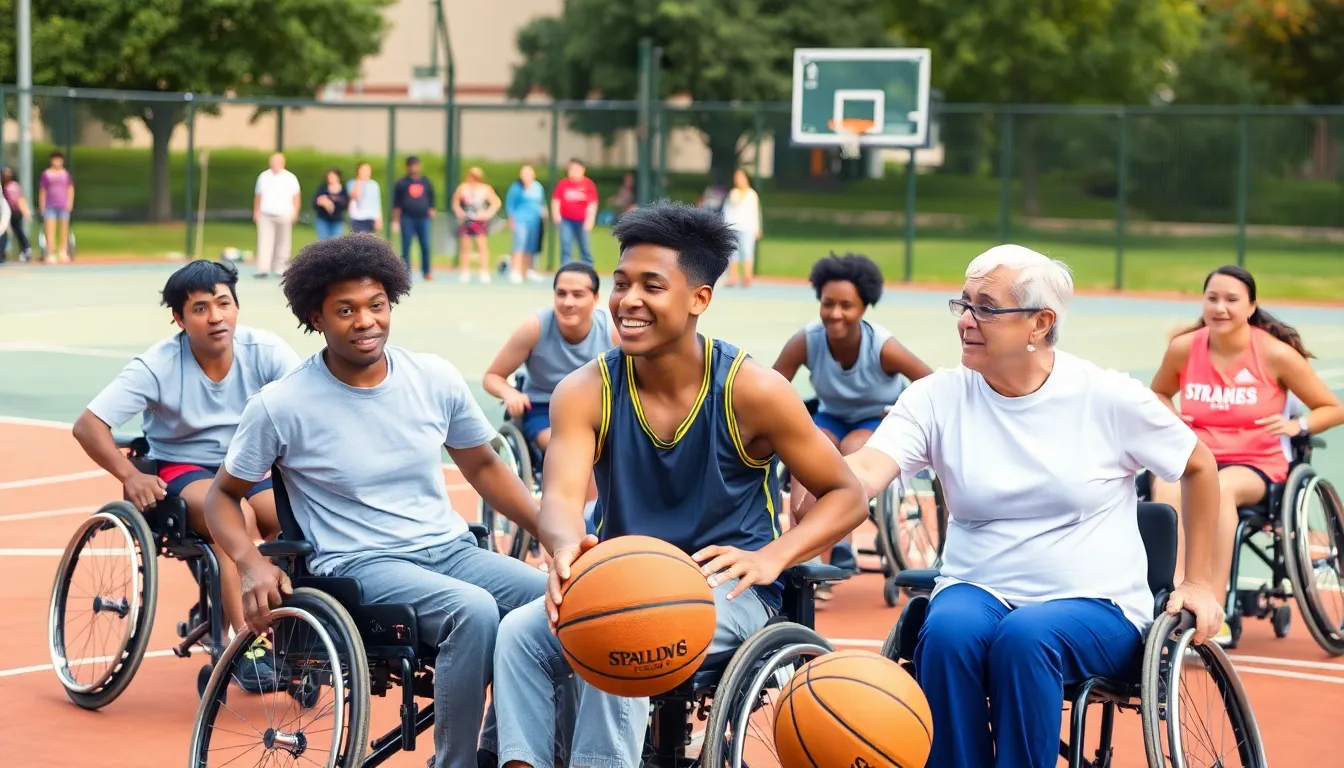In a world where fitness often feels like an exclusive club, inclusive fitness programs are shaking things up and inviting everyone to join the party. Imagine a gym where the only requirement is a willingness to sweat and have fun, not a six-pack or a perfect squat. These programs are designed to break down barriers and create a welcoming space for all, regardless of age, ability, or fitness level.
Table of Contents
ToggleOverview of Inclusive Fitness Programs
Inclusive fitness programs aim to create environments where individuals of all abilities can participate in physical activity. These programs prioritize enjoyment and participation over specific fitness standards.
Definition of Inclusive Fitness Programs
Inclusive fitness programs focus on making physical activities accessible for everyone. They cater to individuals with diverse physical abilities, ensuring that facilities and activities accommodate different needs. Resources like specialized equipment, trained staff, and adaptable routines create supportive environments. Accessible classes often enhance participation, allowing people to engage meaningfully.
Importance of Inclusivity in Fitness
Inclusivity in fitness fosters a sense of belonging among diverse individuals. When everyone can engage in fitness, the likelihood of long-term participation increases significantly. Evidence shows that inclusive environments improve physical and mental well-being while breaking down barriers. Participants often experience enhanced social connections and improved motivation when engaging alongside others. Inclusivity also encourages body positivity and acceptance, promoting holistic health.
Types of Inclusive Fitness Programs

Inclusive fitness programs encompass various options that cater to diverse needs. Each program type emphasizes engagement and accessibility.
Adaptive Sports Programs
Adaptive sports programs provide individuals with disabilities opportunities to participate in competitive and recreational sports. These programs feature specialized equipment, modified rules, and trained coaches who understand the unique requirements of participants. Examples include wheelchair basketball, sitting volleyball, and adaptive cycling. Participants experience improved physical fitness, confidence, and social inclusion. Statistics show that participation in adaptive sports can lead to enhanced physical and mental wellness, significantly increasing quality of life.
Community-Based Fitness Initiatives
Community-based fitness initiatives focus on creating inclusive environments within local settings. These initiatives involve groups collaborating to design activities that meet the needs of diverse populations. Examples include group exercise classes, walking clubs, and garden workouts that accommodate all abilities. Trained facilitators guide these initiatives, ensuring that everyone can participate at their own pace. Research supports that these programs foster relationships and increase overall participation in physical activities. They create spaces where individuals feel welcome and encouraged to improve their health.
Benefits of Inclusive Fitness Programs
Inclusive fitness programs provide numerous benefits, enhancing overall well-being and participation in physical activity.
Physical Health Advantages
Individuals participating in inclusive fitness programs experience improved cardiovascular health and increased strength. Research indicates that tailored exercises cater to varying abilities, which leads to better fitness outcomes. Weight management becomes more achievable, as individuals feel more comfortable engaging in physical activity. Enhanced flexibility and mobility contribute to daily life improvements, allowing individuals to perform everyday tasks more easily. Access to specialized equipment ensures that everyone can participate fully, regardless of their physical limitations. These health advantages encourage sustained engagement, leading to healthier lifestyles.
Social and Emotional Impact
Social connections emerge as a significant advantage of inclusive fitness programs. Participants often form friendships, fostering a sense of community among diverse individuals. Increased social support has a positive effect on motivation, encouraging individuals to attend classes regularly. Emotional well-being improves as participants gain confidence and feel valued. Inclusivity promotes body positivity by encouraging individuals to appreciate their capabilities rather than focusing on limitations. Research supports that belonging to a supportive group enhances mental health, making it easier for individuals to navigate challenges. Overall, these programs create environments where everyone can thrive socially and emotionally.
Challenges in Implementing Inclusive Fitness Programs
Implementing inclusive fitness programs faces several challenges that must be addressed for success.
Resource Limitations
Resource limitations pose significant hurdles. Many fitness facilities struggle to acquire specialized equipment designed for diverse needs. Financial constraints often prevent gyms from hiring trained staff who can effectively support individuals with varying abilities. An inadequate number of accessible programs can discourage participation. Maintenance of equipment also requires ongoing funding, which is not always available. These restrictions can lead to a lack of support, diminishing the effectiveness of inclusive fitness initiatives.
Awareness and Education
Awareness and education are vital for the success of inclusive fitness. Many fitness professionals lack training related to inclusivity and accessibility. Without proper knowledge, it’s difficult for staff to create an accommodating environment. Community outreach efforts often fail to reach those who could benefit from these programs. Misconceptions about disabilities and fitness persistence create barriers, reducing participation rates. Increasing awareness promotes understanding, enabling better engagement and support for inclusive fitness programs.
Inclusive fitness programs are transforming the landscape of physical activity by prioritizing accessibility and enjoyment for all. They create supportive environments that encourage participation from individuals of varying abilities. The benefits extend beyond physical health, fostering social connections and enhancing emotional well-being.
While challenges remain in terms of resources and awareness, the push for inclusivity in fitness is essential for building healthier communities. As more facilities recognize the value of these programs, the potential for positive change grows. Embracing inclusivity not only enriches individual lives but also strengthens the fabric of society, promoting a culture of acceptance and support in fitness.









